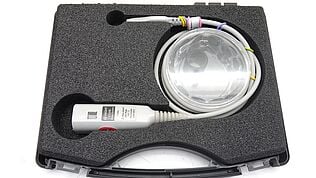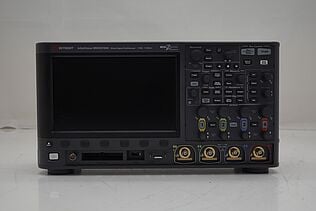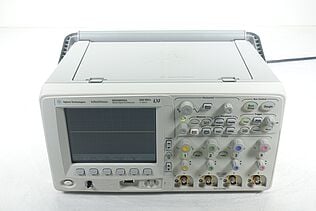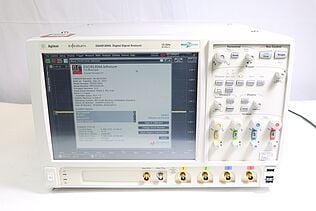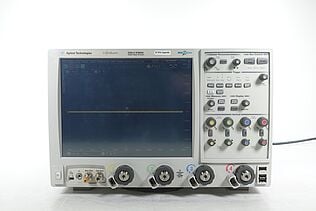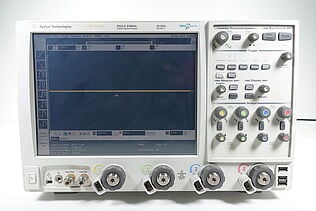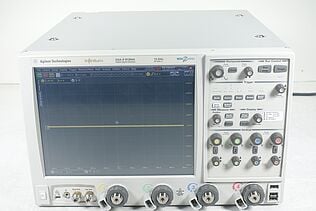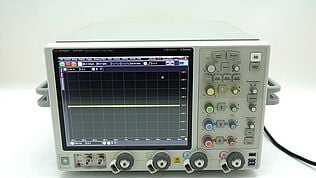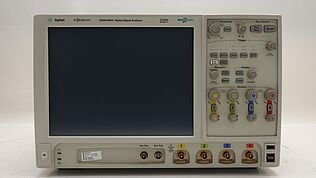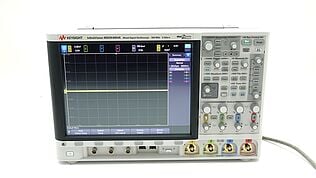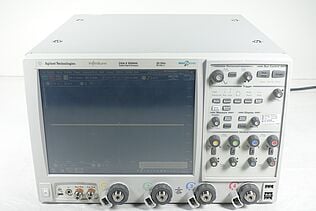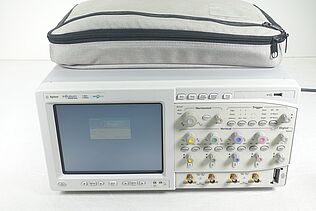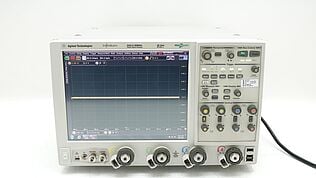- Introduction
- Primary Applications of BERTs
- Benefits of Bit Error Rate Testers
- Types of Bit Error Rate Testers
- How Is It Used?
- Bit Error Rate Performance Metrics
- Identifying Good and Bad Bit Error Rates
- Bit Error Rate in Wireless Communication
- BERT Software
- BER vs SNR (Signal-to-Noise Ratio)
- Framed vs Unframed BERT
- Packet Loss
- Using BERT to Test Ethernet
- Glossary
- Popular Used Oscilloscopes
What is a Bit Error Rate Tester?
A Bit Error Ratio Tester (BERT), is an electronic device that tests how error-free data transmission occurs in a digital circuit. BERT measures the pattern sensitivity to characterize the BER (Bit Error Ratio or Bit Error Rate) of digital systems. They are used to assess bit error rate trends, which is
important in developing communication systems.
Developed by Telcordia Technologies in the mid-1990s, it has become one of the most important tools for testing serial links. The goal of BERTs is to emulate a digital circuit and then measure its error rate. This allows for the analysis of the data transmission reliability of a given channel.
This article will discuss everything there is to know about bit error rate testing, including why they are used, how they are used, and why they are so important.
Buy Oscilloscopes at a Great Discount
Primary Applications of BERTs
BERTs are primarily used to test digital links for end-to-end performance between devices. The simple, quick setup of the BERT allows engineers toeasily attach it to either end of a channel and begin testing. This way, they can evaluate how reliable data transmission is on that channel without expensive equipment.
Given its ease of use and quick results, the BERT is ideal for testing high-speed serial links or even legacy RS-232/RS-422/RS-423/V.35 physical interfaces.
A BERT can be used to perform a bit error rate test on various electronic devices that utilize data transmission. They are most commonly used for measuring high-speed digital links such as
- Satellite modems
- Cellular modems
- Routers and switches
- Network cards on servers, workstations, or multi-port repeaters
Benefits of Bit Error Rate Testers
Error mapping is a critical part of any communications system and application. A Bit Error Rate Tester (BERT) is a device used to test the end-to-end performance of signal transmission in many applications. It allows for the identification and correction of errors in data signals.
BERT is a valuable tool for any organization that relies on the transmission of digital signals. By accurately testing the end-to-end performance of these signals, businesses can ensure that their communications are always up to par.
Additionally, bit error rate testers can be used to troubleshoot communication issues and optimize signal transmission.
BERT testing using test sets like the (Keysight M8020A will not only test for minimum frame error rates, but will also provide the time at which errors occur.
Types of Bit Error Rate Testers
There are a variety of bit error rate testers on the market, each with its own set of features. Some common types of testers include BER testers for:
- Digital optical signals
- Wireless signals
- Data transmission
- Cable signals
How Is It Used?
Typically, probes are attached to either side of a line under test so that several measurements can be made. Once both ends of the line are connected to the BERT, you can test your line with actual data or patterns of 1’s and 0’s. The results over time show if there are significant errors when transmitting this data. The results can be plotted to show the circuit’s bit error rate performance over time.
BERT Limitations
BERTs do have their limitations. Such as,
- They can only test one digital circuit at a time.
- Ineffective when testing an entire network of connected devices.
- Requires knowledge of how to properly use or interpret results.
- Designed only for testing digital links that use serial data transmission.
Bit Error Rate Performance Metrics
Bit error rate performance metrics are measurements of data transmission accuracy over time. Specifically, it is the number of bit errors occurring per bits transmitted.
It can either be a sequential measurement or an accumulated measurement.
- A accumulated measurement ounts the number of incorrect bits and calculates this as a percentage of total number of bits transmitted.
- An sequential measurement alculates and records the total number of incorrect bits.
Identifying Good and Bad Bit Error Rates
A bad bit error rate (bad BER), is any data transmission that contains an excessive number of errors. It only measures the number of bits transmitted that contain an incorrect bit value (0 or 1). There are no specific measurements for common errors, such as framing or parity errors. There are other tools on the market created to test those specific types of errors.
A good BER refers to a data transmission that does not contain excessive errors, typically one error or less every 100,000 bits or more. There are many factors affecting the BER (line code and protocol used, line conditions, etc.) and this measurement does not indicate the type of errors occurring. Therefore, it is difficult to define what a good BER is.
Bit Error Rate in Wireless Communication
In wireless communication, BER is a term that specifies the number of transmission errors that will occur in a data packet. The BER is usually calculated over a specific time period and plotted in a graph, showing how it varies over time.
The simplest way to use a BERT is as an end-to-end testing of equipment. The two ends of the digital circuit may be up to several meters apart from each other.
Attach one end to either side of the digital circuit and run a case for several seconds to minutes while checking the error rate. Increase the length of time until the BERT shows a significant number of errors. The point where this happens is your break-even point between a good signal and a bad one.
BERT Software
As mentioned, BERT is a piece of equipment used to measure Bit Error Rate (BER). It may be an embedded test unit, which typically takes the form of abox with several D-Sub connectors on one end and DB-9 or RJ45 sockets on its other end. The BERT is usually used in conjunction with BERT software.
This type of software may be used to test a serial interface between two pieces of equipment, such as a modem and a router. It works by sending a known data pattern to the tested device and then analyzing it for errors at both ends. The data link is unsuitable if the BER is above a predefined threshold.
Not all BERT esters are hardware. Some are software programs that run on a computer, handheld device or embedded into a system. These BER testers usually send periodically-generated data packets to the tested equipment and then measure its bit error rate.
BER vs SNR (Signal-to-Noise Ratio)
BER is an expression of the number of bit errors per received bit over a period of time, while SNR is expressed as one point in time.
In other words, BER is a value that varies with time and may be very low (no errors) or very high (lots of errors), while SNR is constant.
If we consider the IEEE 802.3 Ethernet standard, which specifies 10 Mbps transmission speed over two-pair UTP cabling, the maximum BER allowed is 10-5*. The BER requirement of this standard means there can be no more than one bit error in 100,000 bits transmitted if the SNR is greater than 30 dB.
What Is a Good Signal-to-Noise Ratio?
Signal-to-Noise ratio (SNR) compares a signal level to the background noise in a given channel. SNR is expressed as a positive decimal number, such as 30 dB or 60 dB. A higher number means that the desired signal is stronger than the background noise and that there will be fewer errors in transmission.
The signal-to-noise ratio must be greater than the minimum required for a given application. For example, most Ethernet applications require a signal level of -40 dBm or higher, while many digital phone systems require -28 dBm or more.
Framed vs Unframed BERT
| Framed | Unframed |
|---|---|
| Transmitter sends data packets that are constrained by a framing format | Transmitter sends data packets that are NOT constrained by any framing format |
| Useful for evaluating the performance of equipment that uses a standard framing format | Useful for evaluating the performance of equipment that does not use standard framing format |
To learn more terms related to your oscilloscope, refer to the Keysight Oscilloscope Glossary.
Packet Loss
This is a measure of the number of packets not received by the DUT (device under test). An error-free connection would give very low or zero packet loss. A BER test could confirm the correct functioning of the system.
The Packet Error Rate formula is:
Packet Error Rate (PER) = (number of packets received in error + number of bit errors within the packet ) / total number of packets sent
For example: If 100 packets are sent and 10 arrive with a single-bit error each, then the PER is 0.01. If instead 2% of the bits were in error for that same 100 packets, the PER would be 0.02.
Using BERT to Test Ethernet
Ethernet BER testing is the process of testing the end-to-end performance of signal transmission in Ethernet networks. This type of testing can be used to troubleshoot many common issues, including bad cable connections, faulty network cards, and software errors.
How Does Ethernet BER Testing Work?
BER testing can be performed in a number of ways. The most common method is to send test packets through the network and then compare the results against a known sample. This process can be automated using special software, or it can be done manually using a BERT.
Browse Oscilloscopes at a Great Discount
Select up to 3 instruments to compare
Enable Notifications
In order to use this feature, you need to enable notifications.
Manage notification preferences
Glossary
| Latency | The time it takes for a signal to travel from one point to another. |
| Jitter | The variation in packet or bit timing, indicated by a change in latency. |
| Pattern generator | Used to produce test patterns for bit error rate testers. |
| Pattern detector | A circuit that extracts a specific bit pattern from a digital signal. |
| Bit pattern generator | Used to test the bit error rate of a transmission channel. |
| Error data sets | Generated through bit-errors in the transmitter and receiver. |
| Pseudorandom pattern | A series of bits that appear to be random but are actually generated by a predetermined algorithm. |
| Bit error rate measurement | A technique employed in telecommunications and data communication to measure the number of bit errors per unit time. |
To learn more about Keysights Premium Used Equipment, visit our product listing page for savings of up to 70%. For additional information about Keysight Oscilloscopes and their uses, see Oscilloscope Basics.
*A BER of 10-5 is a decimal representation of the binary calculation: 1 x 2^5 = 32 errors per
1,000,000 bits transmitted.

Subscribe to Get Our Latest News, Updates, and Articles.
Popular Used Oscilloscopes
Keysight Used Oscilloscopes offers a wide range of industry leading pre-owened oscilloscopes, ranging from older generation Agilent oscilloscopes to the newest Keysight oscilloscope models. So whether you are a fist time buyer, replacing a model like-for-like or looking for upgrade – we have something for you.
